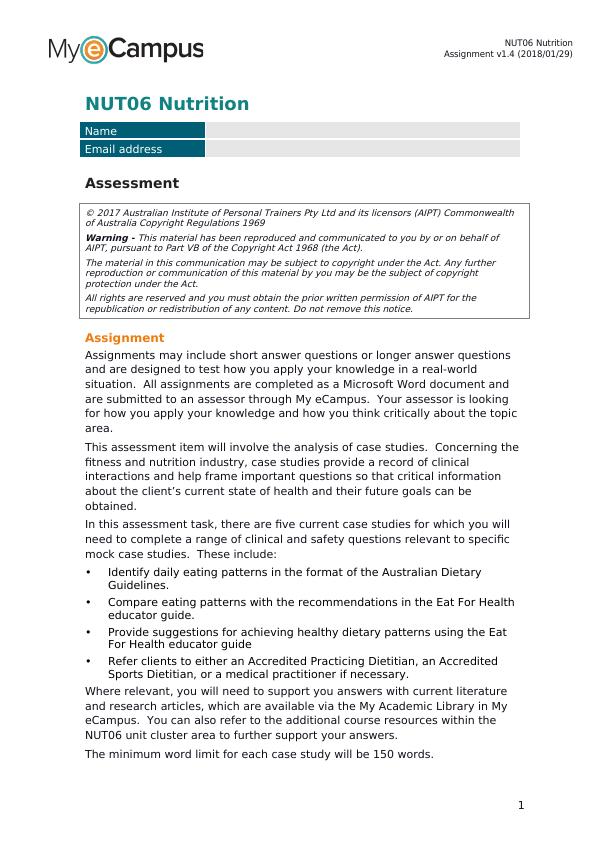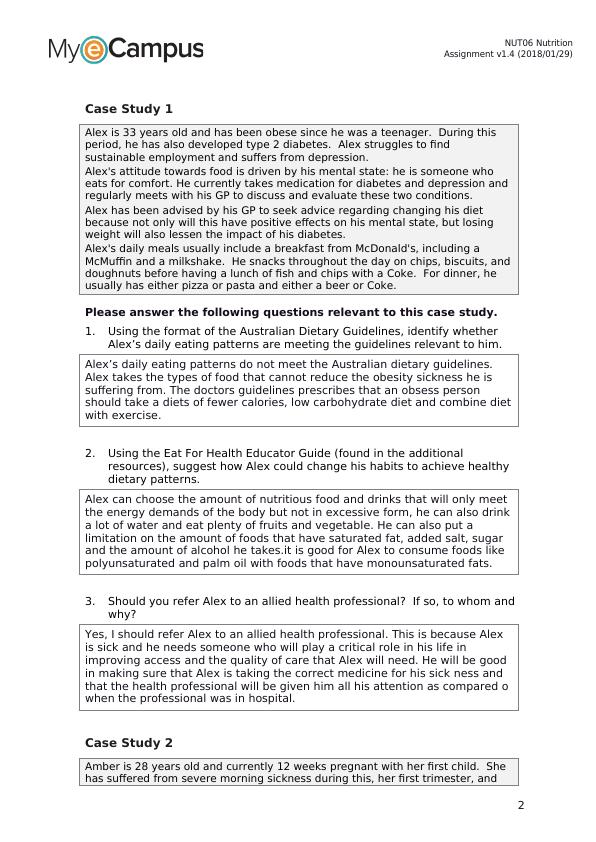NUT06 Nutrition: Case Studies Analysis and Dietary Recommendations
This assignment involves the analysis of case studies in the field of fitness and nutrition.
7 Pages2657 Words460 Views
Added on 2022-10-01
About This Document
This article presents five case studies related to fitness and nutrition industry. Each case study involves the analysis of daily eating patterns and provides dietary recommendations based on the Australian Dietary Guidelines and Eat For Health Educator Guide. The article also suggests referring clients to an Accredited Practicing Dietitian, an Accredited Sports Dietitian, or a medical practitioner if necessary. The minimum word limit for each case study is 150 words.
NUT06 Nutrition: Case Studies Analysis and Dietary Recommendations
This assignment involves the analysis of case studies in the field of fitness and nutrition.
Added on 2022-10-01
ShareRelated Documents
End of preview
Want to access all the pages? Upload your documents or become a member.
NUT06 Nutrition Assignment (Doc)
|9
|4732
|515
Functional Anatomy Assignment: Posture, Injuries, Joint Complexes, Muscles, and Agility
|20
|7445
|378
YNG10 Exercise for the Young: Case Studies, Assessments, and Exercise Programs
|9
|2729
|386
CLD13 Exercise for Children
|5
|1583
|425
Desklib - Online Library for Study Material with Solved Assignments, Essays, Dissertations
|11
|3438
|481
MP07 Motivational Psychology Assignment - Desklib
|8
|3787
|272



